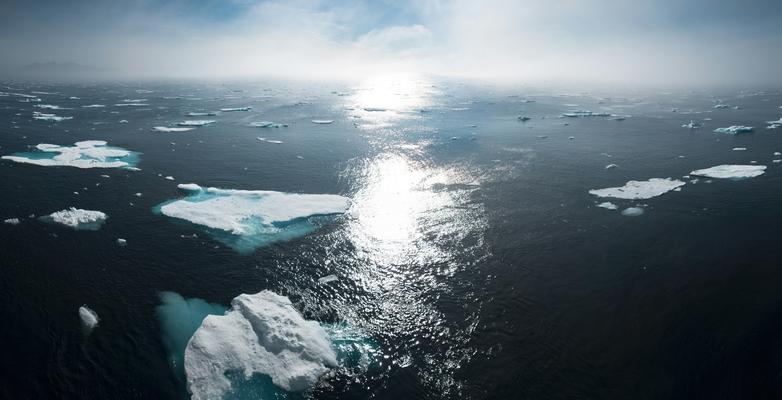
4 Big Climate Stories to Watch for in 2024
With 2023 freshly in the rearview mirror, here are four big climate stories from THE ALLIANCE FOR CLIMATE PROTECTION® to keep your eye on in 2024.
6 min read
Last year was a big one for our climate.
It was the warmest year on record – by far. Average global temperatures for 2023 were 1.35 degrees Celsius (2.43 degrees Fahrenheit) above pre-Industrial levels, according to the National Oceanic and Atmospheric Association (NOAA). That temperature average exceeds the next hottest year, 2016, by a full 0.15 degrees C (0.27 degrees F), with July of 2023 ranking as the hottest month ever recorded.
In 2023, global carbon emissions from fossil fuels reached a record high, and Antarctic sea ice coverage dropped to a record low.
It was during this same year that the planet’s most consequential climate conference happened in a major petrostate – COP 28 in Dubai, United Arab Emirates – under the watchful eye of an oil executive.
That’s not to say nothing got done at COP 28. Major strides were made in the establishment of the Loss and Damage Fund for nations most vulnerable to the impacts of the climate crisis. We also got the most direct recognition in a COP agreement yet of the role of fossil fuels in driving climate change, as well as calls on countries to take steps to triple renewables and double energy efficiency this decade.
But there were plenty of caveats and loopholes too – and no agreement to do the thing we truly need to do to end the climate crisis and create a sustainable future for the planet: phase out fossil fuels entirely.
So, there’s plenty of work still left to do. Looking down the road at what’s to come in the year ahead, several key themes emerge. With 2023 freshly in the rearview mirror, here are four big climate stories to keep your eye on in 2024.
COP 29
Let’s start with the not-so-ideal news. The 29th annual Conference of the Parties (COP 29) is happening in another petrostate – this time Azerbaijan – and will again be overseen by a (this time not current, at least) state oil executive, Mukhtar Babayev, who now serves as the country’s ecology and natural resources minister.
“It means that a minister with vast experience in oil and gas will lead negotiations at the UN’s biggest and most important annual climate conference for the second consecutive year,” CNBC writes of Babayev’s appointment.
>> Catch Up on COP 28 with 24 Hours of Reality <<
Things got off to an especially rocky start earlier this month when the president of Azerbaijan, Ilham Aliyev, announced an all-male, 28-person organizing committee for COP 29. After an initial backlash, the nation quickly announced the addition of 12 women to the organizing committee.
What’s clear is that questions of conflict of interest will again be high on climate advocates’ minds heading into this year’s COP, where critical issues of climate finance will be decided.
Climate Finance
Speaking of climate finance, the funding necessary for the global transition away from fossil fuels to renewable energy and for countries, particularly emerging nations, to adapt to our warming world will remain top of mind this year.
“Climate finance refers to financial resources and instruments that are used to support action on climate change. Climate finance is critical to addressing climate change because of the large-scale investments that are needed to transition to a low-carbon global economy and to help societies build resilience and adapt to the impacts of climate change,” according to the United Nations Development Programme.
Adaptation finance can come from a variety of sources, including public sources, such as development aid from governments, private sources like investments from businesses and individuals, and blended finance, which combines public and private resources.
Emerging countries are particularly vulnerable to the impacts of climate change, and they need significant financial support to adapt. Current estimates on addressing adaptation financing needs sit at up to $387 billion USD per year until 2030, and it’s no secret that we’ve long needed to establish mechanisms to start delivering finance flows to where they are needed most.
At a time when direct government subsidies of fossil fuels totaled a staggering $1.3 trillion – and indirect subsidies came in at trillions more – there are myriad avenues to deliver the climate financing countries need to hold global temperature rise to no more than 1.5 degrees Celsius and adapt to the climate change we’re already seeing. Finding ways to deliver that financing will remain at the forefront of the climate movement in 2024 – and particularly at COP 29.
Preview of a 1.5 Future, Courtesy of El Nino
The El Nino previous to the one currently heating up the Pacific Ocean, in 2015-16, helped push global temperatures to a then record high, with 2016 being the hottest year ever – until 2023 came along and overtook it. Now, some in the climate science community are wondering whether the current El Nino, which stands a good chance of being a “historically strong” phenomena, alongside the global warming we’ve baked into the equation since 2016, will drive global average temperatures in 2024 to the 1.5 degrees Celsius danger line – offering a preview of what our world could look like if we don’t quickly rein in greenhouse gas emissions and begin working toward a net zero future.
“El Niño’s return could further strain sensitive ecosystems, like the Great Barrier Reef and the Amazon rainforest, and nudge the planet closer to worrisome tipping points,” Yale Climate Connections writes. “It might also push the world past a threshold that scientists have been warning about, giving people a temporary glimpse of what it’s like to live on a planet that’s 1.5 degrees Celsius warmer (2.7 degrees Fahrenheit) than preindustrial times — a level that could begin to unleash some of the more drastic consequences of climate change.”
When we talk about 1.5 degrees Celsius of warming, we’re talking about the increase in the Earth’s average temperature, measured from a mid-to-late nineteenth century baseline. This was the dawn of the Industrial Revolution – i.e., when use of fossil fuels kicked into high gear, jumpstarting the climate crisis.
>> Read More: How Feedback Loops Are Making the Climate Crisis Worse <<
According to scientists, it’s at about 1.5 degrees Celsius of average global warming that many of our planet’s natural systems could be pushed beyond dangerous and, in many cases, irreversible tipping points. Things like “the disintegration of ice sheets in Greenland and the West Antarctic, the abrupt thawing of permafrost in the Arctic, or the collapse of the Atlantic Ocean’s Gulf Stream current,” according to Yale Climate Connections.
To be clear, one year of temperatures reaching the 1.5-degree Celsius line is very different from averaging comparable temperature rise across several years, but it also could create some dangerous weather and ecosystem events around the globe, offering a glimpse of exactly the future we’re fighting tooth and nail to prevent.
Disinformation Everywhere
If it feels like you’re seeing ads touting your friendly neighborhood Big Polluters’ commitment to sustainability, it’s because you are.
For years, these companies have used million-dollar ad campaigns to mislead us about their climate responsibility and commitments – all while continuing the same business-as-usual, destroying our planet. Indeed, one study even found that five of the major oil companies – ExxonMobil, Shell plc, Chevron Corporation, BP plc, and ConocoPhillips Company – spent nearly $3.6 billion combined on advertising between 1986 and 2015 trying to clean up their respective appearances.
We call it “greenwashing.” And we see it everywhere we look.
Greenwashing is a misleading marketing practice in which a company, product, or business is falsely or excessively promoted as being environmentally friendly.
“Greenwashing undermines credible efforts to reduce emissions and address the climate crisis. Through deceptive marketing and false claims of sustainability, greenwashing misleads consumers, investors, and the public, hampering the trust, ambition, and action needed to bring about global change and secure a sustainable planet,” the United Nations reports.
>> Join Us on the Road to True Net Zero: Calling Out Greenwashing <<
Greenwashing has become so pervasive that it’s also often hard to spot – which is part of what makes it so dangerous. Companies now routinely use environmental buzzwords, official-looking symbols and labels, and claims of sustainability to “draw attention away from the harmful activities making up the majority of their business practices,” per the National Resources Defense Council.
We should expect this trend to continue in 2024 and beyond. As more and more people seek to take action with their wallets to fight for a better tomorrow, more and more companies are also likely to try to shield their true motives through deceptive marketing tactics rather than undertake real changes to their practices.
All the more reason to educate ourselves on what to look for, so we’re ready to call out greenwashing when we see it.
Be Prepared for Whatever 2024 Throws at You
The writing’s on the wall: We need to accelerate the global shift from the dirty fossil fuels driving climate change to renewables so we can power our lives and economies without destroying our planet.
Now’s the time to think big and act boldly to confront the climate crisis threatening our future.
Are you ready to take action this and every year for a better, more sustainable climate?
THE ALLIANCE FOR CLIMATE PROTECTION® will keep you posted on how you can take action to protect the climate with us.




